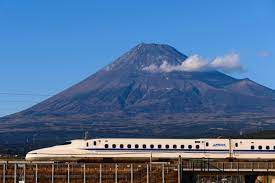Happy New Year! In the future, passive housing will need to be part of, if not all the housing we live in, more and more of it. As we look towards 2024, I would like to celebrate the growth in know-how for building houses that are energy independent, or nearly so.
Maine is doing it. Going passive, nearly net-zero in most cases. They are doing it one house at a time. Each house does not cost significantly more than any typical new house: about ten percent more. The main component is very good insulation, and that accounts for most of the extra cost. And, you need to know how.
Massachusetts is at it, too. Partly new construction, partly deep retrofitting.
The know-how has been developing for about 30 years. Passivehaus is what it is called in Europe. In America, I found a site that “translated” it to “Passivehouse”. That site, explains it this way:
Passive House is not a brand name but a tried and true construction concept that can be applied by anyone, anywhere.
Yet, a Passive House is more than just a low-energy building:
-
- Passive Houses allow for space heating and cooling related energy savings of up to 90% compared with typical building stock and over 75% compared to average new builds. Passive Houses use less than 1.5 l of oil or 1.5 m3 of gas to heat one square meter of living space for a year – substantially less than common “low-energy” buildings. Vast energy savings have been demonstrated in warm climates where typical buildings also require active cooling.
- Passive Houses make efficient use of the sun, internal heat sources and heat recovery, rendering conventional heating systems unnecessary throughout even the coldest of winters. During warmer months, Passive Houses make use of passive cooling techniques such as strategic shading to keep comfortably cool.
- Passive Houses are praised for the high level of comfort they offer. Internal surface temperatures vary little from indoor air temperatures, even in the face of extreme outdoor temperatures. Special windows and a building envelope consisting of a highly insulated roof and floor slab as well as highly insulated exterior walls keep the desired warmth in the house – or undesirable heat out.
- A ventilation system imperceptibly supplies constant fresh air, making for superior air quality without unpleasant draughts. A highly efficient heat recovery unit allows for the heat contained in the exhaust air to be re-used. [source]
Granted, this is a better solution for areas where there is open land. There, it is more economical to build on land that is undeveloped. But urban and suburban retrofitting can do better than the cellulose insulation that MassSave has been blowing into our walls.
Vision of the future
Spread out. Create public transport.
There are these vague and not-so-vague promises of high-speed light rail. Our current President is behind efforts to build high-speed rail. If we get that high-speed rail, we could efficiently build passive houses in places where commuters could get to central Boston in a reasonable amount of time. That would create a boom in building near high-speed commuter routes into Boston.
What would happen to the inefficient urban housing?
Urban housing will always be popular for people who like the amenities of city life. However, if it becomes possible to buy a house in the suburbs and still get to work in a reasonable time, some people will make that choice. This will reduce the pressure on the super-heated metro-Boston housing market and leave room for more people to afford to be here.
It will also make retrofitting more popular for folks in their old Boston-area houses. In the future, houses will be energy efficient; they will have to be in order to be affordable to live in.
I can dream, can’t I? Happy New Year.


Leave A Comment